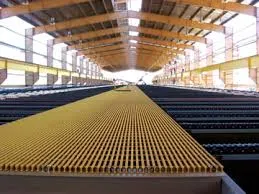
-
 Afrikaans
Afrikaans -
 Albanian
Albanian -
 Amharic
Amharic -
 Arabic
Arabic -
 Armenian
Armenian -
 Azerbaijani
Azerbaijani -
 Basque
Basque -
 Belarusian
Belarusian -
 Bengali
Bengali -
 Bosnian
Bosnian -
 Bulgarian
Bulgarian -
 Catalan
Catalan -
 Cebuano
Cebuano -
 China
China -
 China (Taiwan)
China (Taiwan) -
 Corsican
Corsican -
 Croatian
Croatian -
 Czech
Czech -
 Danish
Danish -
 Dutch
Dutch -
 English
English -
 Esperanto
Esperanto -
 Estonian
Estonian -
 Finnish
Finnish -
 French
French -
 Frisian
Frisian -
 Galician
Galician -
 Georgian
Georgian -
 German
German -
 Greek
Greek -
 Gujarati
Gujarati -
 Haitian Creole
Haitian Creole -
 hausa
hausa -
 hawaiian
hawaiian -
 Hebrew
Hebrew -
 Hindi
Hindi -
 Miao
Miao -
 Hungarian
Hungarian -
 Icelandic
Icelandic -
 igbo
igbo -
 Indonesian
Indonesian -
 irish
irish -
 Italian
Italian -
 Japanese
Japanese -
 Javanese
Javanese -
 Kannada
Kannada -
 kazakh
kazakh -
 Khmer
Khmer -
 Rwandese
Rwandese -
 Korean
Korean -
 Kurdish
Kurdish -
 Kyrgyz
Kyrgyz -
 Lao
Lao -
 Latin
Latin -
 Latvian
Latvian -
 Lithuanian
Lithuanian -
 Luxembourgish
Luxembourgish -
 Macedonian
Macedonian -
 Malgashi
Malgashi -
 Malay
Malay -
 Malayalam
Malayalam -
 Maltese
Maltese -
 Maori
Maori -
 Marathi
Marathi -
 Mongolian
Mongolian -
 Myanmar
Myanmar -
 Nepali
Nepali -
 Norwegian
Norwegian -
 Norwegian
Norwegian -
 Occitan
Occitan -
 Pashto
Pashto -
 Persian
Persian -
 Polish
Polish -
 Portuguese
Portuguese -
 Punjabi
Punjabi -
 Romanian
Romanian -
 Russian
Russian -
 Samoan
Samoan -
 Scottish Gaelic
Scottish Gaelic -
 Serbian
Serbian -
 Sesotho
Sesotho -
 Shona
Shona -
 Sindhi
Sindhi -
 Sinhala
Sinhala -
 Slovak
Slovak -
 Slovenian
Slovenian -
 Somali
Somali -
 Spanish
Spanish -
 Sundanese
Sundanese -
 Swahili
Swahili -
 Swedish
Swedish -
 Tagalog
Tagalog -
 Tajik
Tajik -
 Tamil
Tamil -
 Tatar
Tatar -
 Telugu
Telugu -
 Thai
Thai -
 Turkish
Turkish -
 Turkmen
Turkmen -
 Ukrainian
Ukrainian -
 Urdu
Urdu -
 Uighur
Uighur -
 Uzbek
Uzbek -
 Vietnamese
Vietnamese -
 Welsh
Welsh -
 Bantu
Bantu -
 Yiddish
Yiddish -
 Yoruba
Yoruba -
 Zulu
Zulu
frp duct system
Understanding FRP Duct Systems A Key Innovation in Modern Construction
Fiber Reinforced Polymer (FRP) duct systems are revolutionizing the way we approach ventilation and air distribution in various construction projects. Combining lightweight materials with exceptional strength, FRP ducts offer a range of advantages that traditional duct systems cannot provide. This article explores the benefits, applications, and future of FRP duct systems in modern construction.
FRP duct systems are composed of a polymer matrix reinforced with fibers, usually glass or carbon. This composite construction gives FRP ducts remarkable structural integrity, corrosion resistance, and thermal insulation properties. As a result, they are well-suited for demanding environments, including industrial plants, marine applications, and wastewater treatment facilities, where traditional metal ducts may succumb to rust and deterioration.
Understanding FRP Duct Systems A Key Innovation in Modern Construction
Another key advantage is the exceptional resistance of FRP materials to corrosion and chemical degradation. In environments where exposure to harsh chemicals is inevitable, such as in chemical processing or food manufacturing, FRP ducts maintain their integrity over time, thereby ensuring consistent performance and reliability. This durability translates into lower maintenance costs and a longer lifespan for the duct systems, providing significant savings over time.
frp duct system

Furthermore, FRP duct systems are thermally non-conductive, which allows for better energy efficiency by minimizing unwanted heat transfer. This property is particularly beneficial in HVAC applications, where maintaining optimal temperatures is crucial for energy conservation and occupant comfort. Moreover, the insulating characteristics of FRP help to reduce condensation problems, further enhancing system performance and longevity.
The versatility of FRP duct systems extends to their ease of customization. Manufacturers can design ducts to meet specific requirements regarding shape, size, and performance, making them suitable for a wide range of applications. This adaptability fosters innovation in design and efficiency, enabling engineers and architects to explore new possibilities in building construction and airflow management.
Looking ahead, the future of FRP duct systems appears promising. With the growing emphasis on sustainable construction practices and the rising demand for energy-efficient buildings, FRP technology is poised to play a crucial role in developing eco-friendly solutions. Ongoing advancements in material science are likely to enhance the performance of FRP ducts further, making them even more appealing for future projects.
In conclusion, FRP duct systems represent a significant advancement in the construction industry, offering unmatched durability, lightweight properties, and energy efficiency. As we continue to innovate and tackle the challenges of modern construction, FRP will undoubtedly remain at the forefront, paving the way for smarter, more sustainable building practices.
Latest news
-
Exploring the Benefits of Top Hammer Drifter Rods for Enhanced Drilling PerformanceNewsJun.10,2025
-
High-Precision Fiberglass Winding Machine for GRP/FRP Pipe Production – Reliable & Efficient SolutionsNewsJun.10,2025
-
FRP Pipes & Fittings for Shipbuilding - Corrosion-Resistant & LightweightNewsJun.09,2025
-
Premium FRP Flooring Solutions Durable & Slip-ResistantNewsJun.09,2025
-
Premium Fiberglass Rectangular Tanks Durable & Lightweight SolutionNewsJun.09,2025
-
Tapered Drill String Design Guide Durable Performance & UsesNewsJun.09,2025









